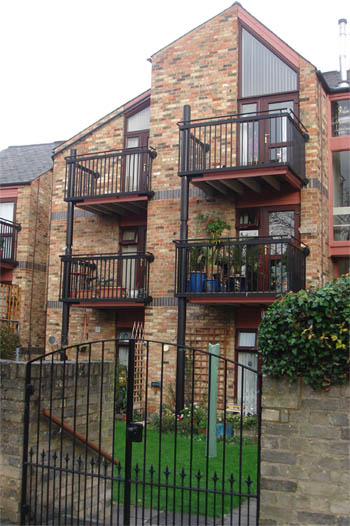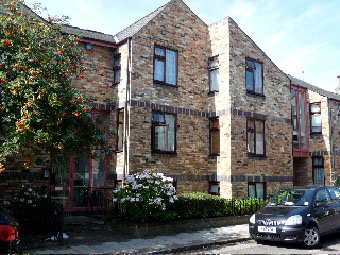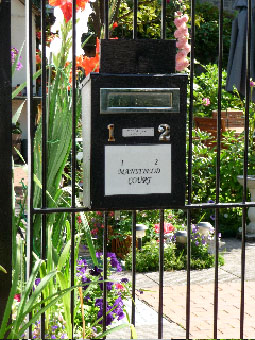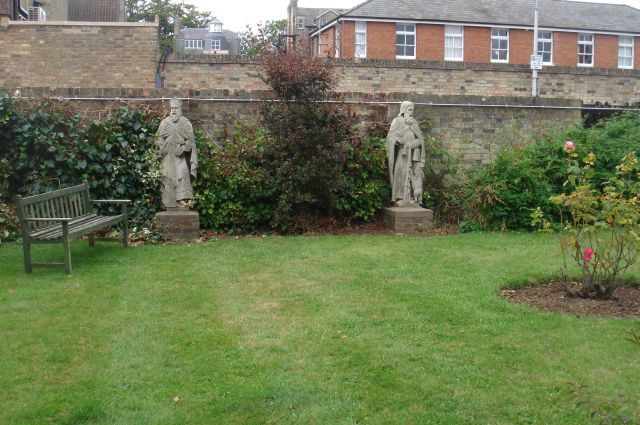UCC owns twenty-eight one-bedroom unfurnished almshouses which are available, in general but not exclusively, to people over 55 with limited financial resources who have lived in Cambridge for at least two years.
The UCC is a member of the Almshouse Association.
The almshouses are located in:
Since 2016 their day-to-day management has been in the hands of the Hundred Houses Society (HHS), a local Registered Social Landlord which operates many properties in the city.
Each group of almshouses has a Visiting Trustee, and there is also an Almshouse Trustee with wider governance responsibilities.
Residents of the almshouses are not tenants, but are ‘beneficiaries of an almshouse charity’. They pay a Weekly Maintenance Contribution (WMC) towards the services provided, and sign a Letter of Appointment when they move in.
Applying for an almshouse
Vacancies at the almshouses are advertised through the local Choice Based Lettings Scheme which is managed for the Charity by the Hundred Houses Society
Enquiries can also be made directly to the Almshouse Trustee by email (please see the Contact page for the email address) and, if you are eligible, you may be put on the waiting list.
Applicants will be asked to complete the application form and give consent for the Charity to seek medical information. If you are considering applying for a UCC almshouse, you may find it helpful to read the residents’ Handbook in the Public Documents section.
The Regulations which apply to residents of the almshouses are the responsibility of the trustees.
John Street
18-20 John Street Cambridge CB1 1DT
In 1977 the Charity approved the scheme for the building of the John Street almshouses at a total cost of £92,180, which was borrowed from the City Council

The eleven almshouses at 18 and 20 John Street were built in 1978, partly as a replacement for the Emily Wood almshouses in Union Lane, the site of which was acquired by the City Council in 1972 for a road-widening scheme.
These almshouses are the only flats belonging to the Charity. The flats look out onto communal gardens at the rear.

King Street
117 – 125 King Street, Cambridge CB1 1LD
Here five almshouses of traditional design open onto one of the busiest streets in the town centre, next to the St Radegund, the smallest pub in Cambridge the freehold of which is also owned by Cambridge United Charities.

The almshouses belonging to the charity are named Knight and Mortlock after the original benefactors. The original almshouses in Jesus Lane were established under a will of Elizabeth Knight, of Denny Abbey, Waterbeach, dated 1647.
William Mortlock subsequently contributed significantly to the endowment of the almshouses and, in 1836 they were renamed the Knight and Mortlock Almshouses. However, in 1879 the almshouses in Jesus Lane were so decayed that it was decided to build the new almshouses in King Street which were completed in 1880.
The Scheme for the improvement of the Knight and Mortlock almshouses in King Street was started in 1981 with the aid of a loan from the Housing Corporation.
Church Street Chesterton
1&2 Mansfield Court and 18-21 Church Street, Chesterton, CB4 1DT
The almshouses in Church Street, Chesterton date from 1881 and from a deed of gift made by Stephen Mansfield by which the four cottage style almshouses on Church Street were constructed.

In 1986 with the aid of a loan from the Housing Corporation the almshouses were refurbished and two new almshouses constructed in the rear garden, now called 1 and 2 Mansfield Court.

The side gate to Mansfield Court leads to a delightful award-winning communal garden, which has been created by the hard work and skill of the residents. In 2007, they made a beautiful calendar featuring photos of the flowers that fill this small oasis in Old Chesterton.
St Anthony’s Walk
1-6 St Anthony’s Walk, Cambridge, CB2 1JL
The accommodation of the hospital of St. Anthony and St. Eligius, better known formerly as the “Spital House” dates back to 1526. The almshouses now in St. Anthony’s Walk were, however, rebuilt by the Cambridge Municipal Charity in 1968.

In a secluded side street in Newtown, the almshouses are of modern design, with a communal garden where statues of St Anthony and St Eligius are a link with their history.
